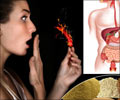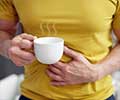After food poisoning, start with ice chips, progress to clear liquids, then bland foods like the BRAT diet.
- Start with ice chips and clear liquids, progressing to bland foods as tolerated
- Avoid irritants like caffeine and spicy foods until fully recovered
- Consult a healthcare provider if symptoms persist or worsen
What to Eat After Food Poisoning or a Stomach Bug
Go to source).
Gradually reintroducing food after a stomach bug can help speed up recovery and reduce discomfort. #medindia #foodpoisoning’
Immediate Care (0-6 Hours) after Food Poisoning
In the initial hours after symptoms like vomiting and diarrhea, focus on staying hydrated. Start with ice chips or a popsicle to slowly reintroduce fluids without overwhelming your stomach. Avoid chewing or swallowing anything substantial during this period. If dehydration risks are high, especially in young children, older adults, or those with certain health conditions, consult your doctor.After 6 Hours of Food Poisoning
Once you can keep ice chips down, gradually sip clear liquids such as water, apple juice, grape juice, or broth. Choose flat and clear liquids to avoid aggravating your stomach. If you’re feeling better, you can progress to these fluids sooner than six hours. If symptoms persist or worsen, consult your healthcare provider, as severe dehydration might require medical attention or IV fluids.After 24 Hours of Food Poisoning: The BRAT Diet
As your condition improves, start incorporating bland foods known as the BRAT diet.The BRAT diet is a well-known approach for easing digestive issues, particularly after food poisoning or a stomach bug. The acronym stands for Bananas, Rice, Applesauce, and Toast, which are chosen for their bland, easily digestible nature.
1. Bananas
- Bananas are gentle on the stomach and rich in potassium, an essential mineral often depleted during bouts of vomiting and diarrhea. They provide energy and help restore electrolyte balance.
- Eat ripe bananas plain, or mash them to make them easier to digest.
- Plain white rice is bland and helps to firm up stools, which can be useful in managing diarrhea. It’s also easy on the stomach and provides a simple carbohydrate source for energy.
- Cook rice without any added spices, butter, or oils. Plain rice porridge or congee can be a soothing option.
- Applesauce is mild and provides some vitamins and energy. It contains pectin, which can help firm up stools.
- Opt for unsweetened applesauce to avoid excess sugar, which can irritate the stomach.
- Toast is easy to digest and can provide simple carbohydrates without irritating the stomach. It helps to provide energy and absorb stomach acids.
- Eat plain, white-bread toast without butter, jams, or other spreads.
Additional BRAT Diet Foods
While the core BRAT foods are often recommended, adding a few more bland, easily digestible foods can further aid recovery:
5. Plain Crackers
- Like toast, plain crackers are gentle on the stomach and provide carbohydrates without added fats or spices.
- Choose simple, unflavored crackers.
- Boiled potatoes are mild and can help with digestion. They provide essential nutrients without being too heavy.
- Avoid adding butter or seasoning; simply boil and mash.
- Oatmeal is soothing and easy on the stomach. It provides soluble fiber, which can help regulate bowel movements.
- Prepare with water, and avoid adding sugar or milk initially.
- Clear broths, such as chicken or vegetable, help with hydration and provide some nutrients and electrolytes without being too rich.
- Sip slowly to ease nausea and provide hydration.
- Herbal teas like ginger or peppermint can help alleviate nausea and aid digestion.
- Drink in moderation, and ensure the tea is not too strong.
Returning to Normal after Food Poisoning
As you continue to recover, reintroduce a variety of foods into your diet while monitoring how your body responds. Avoid irritants like caffeine, fried foods, fatty foods, spicy foods, and alcohol, as these can exacerbate symptoms or cause further discomfort.Most people resume their normal diet within a week, but recovery times can vary. Adjust your diet based on how you feel, and listen to your body’s cues. If symptoms are severe or persistent, seek medical help. In the emergency room, you’ll receive necessary treatments like IV fluids and possibly medications to ease symptoms.
Reference:
- What to Eat After Food Poisoning or a Stomach Bug - (https://www.houstonmethodist.org/blog/articles/2023/jul/what-to-eat-after-food-poisoning-or-a-stomach-bug/)
Source-Medindia
















